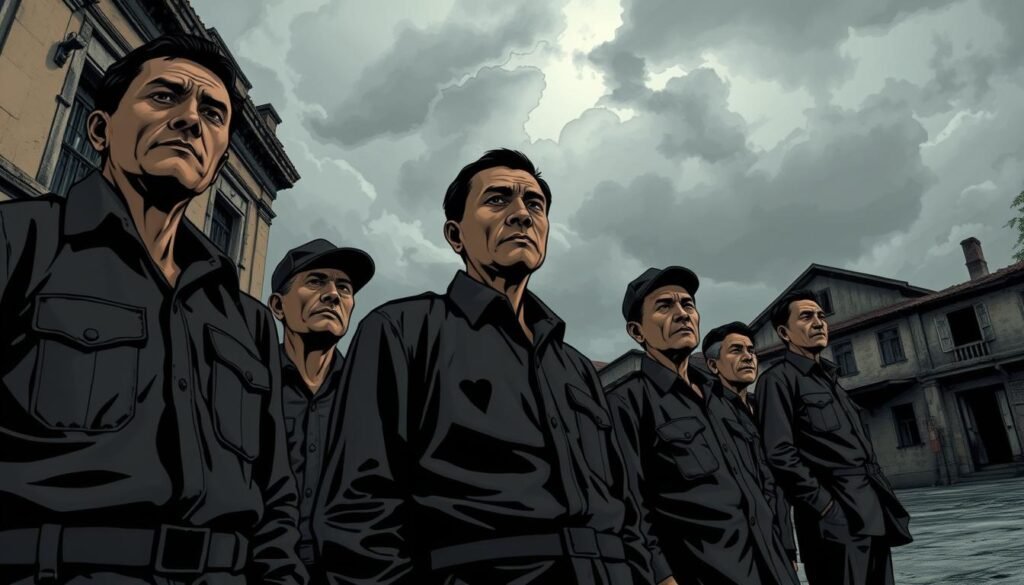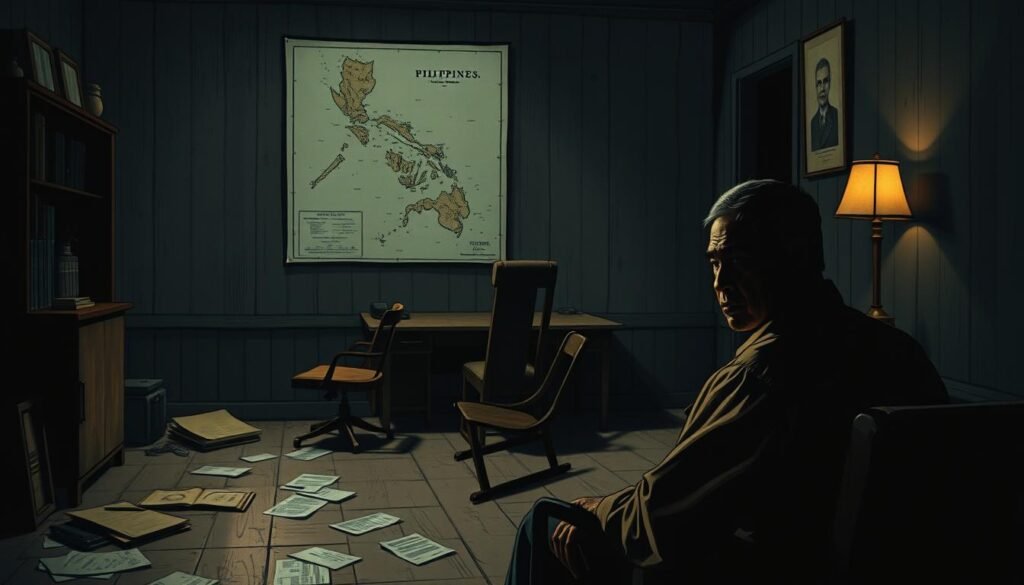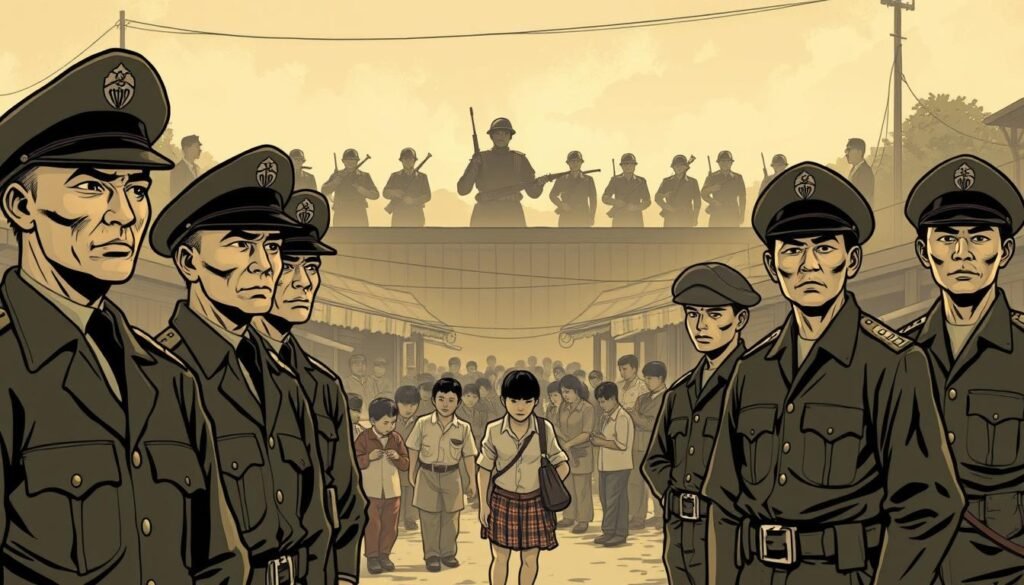The Japanese Occupation of the Philippines, which lasted from 1942 to 1945, was a tumultuous period in the nation’s history. During this time, the Filipino people faced immense challenges, and their responses varied widely. Among these responses, the role of Filipino collaborators remains a complex and often controversial topic.
Historically, the term collaborator has been used to describe individuals who worked with occupying forces. According to the Cambridge Dictionary, a collaborator is often seen as an “enemy supporter.” However, the motivations behind such actions were far from simple. Many Filipinos who collaborated with the Japanese did so under duress, while others saw it as a means of survival or even a way to protect their communities.
This section will explore the multifaceted roles of these individuals, shedding light on the historical and social implications of their actions. By examining their motivations and the impact of their choices, we aim to provide a deeper understanding of this complex chapter in Philippine history.
Key Takeaways
- The Japanese Occupation of the Philippines lasted from 1942 to 1945.
- Collaborators were individuals who worked with the occupying forces.
- Motivations for collaboration varied, including survival and community protection.
- The term “collaborator” carries historical and social complexities.
- This section sets the stage for a detailed exploration of the topic.
Historical Context and Definitions
The word collaborator carries heavy historical weight, especially in the context of war. According to the Cambridge Dictionary, a collaborator is often defined as an “enemy supporter.” This definition, however, doesn’t fully capture the complexities of why individuals might align with occupying forces.

In the Philippines, the Japanese Occupation from 1942 to 1945 created an environment where survival often depended on difficult choices. The term collaborator evolved during this period, becoming a label that sparked controversy and debate. Some saw it as a betrayal, while others viewed it as a necessary act of protection for their families and communities.
Defining “Collaborators” in a Wartime Setting
During wartime, the label collaborator was used to describe those who worked with occupying forces. This term, however, is not black and white. It encompasses a range of motivations, from coercion to strategic survival. Understanding this nuance is crucial to grasping the historical and social implications of collaboration.
An Overview of the Japanese Occupation in the Philippines
The Japanese Occupation was a period of intense hardship for Filipinos. The geopolitical context of World War II placed the Philippines at the center of global conflict. This environment forced many to make choices that would later be scrutinized under the lens of history. For a deeper look into this era, explore the legacy of William Cameron Forbes, which provides additional context on the Philippines during this time.
Ultimately, the term collaborator remains a controversial topic in Filipino history. Its definitions and implications continue to shape national identity and historical narratives, making it essential to approach the subject with both empathy and critical analysis.
Motivations Behind the Actions of Filipino Collaborators
Economic, social, and political pressures played a key role in wartime decisions. During the Japanese Occupation, many Filipinos faced extreme hardships that forced them to make difficult choices. The term collaborator often oversimplifies these decisions, which were influenced by a complex mix of factors.

Understanding these motivations requires examining the broader context of the Occupation. Economic instability, social pressures, and political turmoil created an environment where survival often depended on aligning with the occupying forces. For some, collaboration was a means of protecting their families and communities.
Economic, Social, and Political Pressures
The economic conditions during the Occupation were dire. Many Filipinos struggled to provide for their families due to widespread poverty and resource shortages. Collaboration sometimes offered access to food, shelter, and other necessities that were otherwise unavailable.
Social pressures also played a significant role. Communities often faced collective punishment for resisting the Japanese. To avoid such consequences, some individuals chose to collaborate, believing it would protect their loved ones.
Politically, the Occupation created a power vacuum that forced many to navigate a complex landscape. Local leaders sometimes collaborated to maintain order or negotiate better conditions for their constituents. These decisions were rarely black and white.
Personal and Ideological Influences
Personal motivations varied widely. Some individuals collaborated out of fear or coercion, while others saw it as a strategic move for survival. Ideological alignment with Japanese policies also influenced certain decisions, though this was less common.
Community dynamics further complicated these choices. In some cases, collaboration was seen as a way to preserve cultural or social structures. For others, it was a pragmatic response to an impossible situation.
| Factor | Description |
|---|---|
| Economic Instability | Access to resources like food and shelter drove some to collaborate. |
| Social Pressures | Fear of collective punishment influenced decisions to align with occupiers. |
| Political Turmoil | Local leaders sometimes collaborated to maintain order or negotiate better conditions. |
| Personal Survival | Many collaborated out of fear or necessity to protect themselves and their families. |
| Ideological Alignment | Rarely, some aligned with Japanese policies due to shared beliefs. |
These motivations were deeply intertwined with the broader societal and economic conditions of the period. Understanding them helps shed light on the complexities of wartime decisions.
The Impact of Collaborators on Occupation Dynamics
The actions of those who aligned with occupying forces during the Japanese Occupation sparked intense debates. These individuals, often labeled with the word “collaborator,” played a significant role in shaping the dynamics of the period. Their choices influenced public sentiment, created social divisions, and left a lasting mark on the nation’s identity.

Shaping Public Perception and Social Controversies
During the Occupation, the activities of collaborators deeply affected public perception. Many Filipinos viewed their actions as a betrayal, while others saw them as a necessary survival strategy. This divide created social tensions that persisted long after the war ended.
Propaganda and media played a crucial role in shaping reputations. Both Japanese and Filipino sources used narratives to either vilify or justify these actions. Over time, these portrayals influenced how history remembers these individuals.
Long-Term Effects on National Identity
The legacy of wartime collaboration continues to influence Filipino society. Issues of honor, betrayal, and reconciliation remain central to the national discourse. These events have shaped how subsequent generations view their history and identity.
For example, studies on group dynamics highlight how collaboration and conflict can shape collective memory. Similarly, research on team interactions underscores the importance of understanding complex relationships in historical contexts.
Ultimately, the moral legacy of these individuals is complex. Their actions must be understood within the broader context of wartime survival and societal pressures.
Conclusion
The role of Filipino individuals during the Japanese Occupation remains a deeply complex topic. Labeling them solely as traitors or survivors oversimplifies their actions. Historical records show that their decisions were shaped by survival, protection, and societal pressures.
Understanding this period requires a nuanced perspective. The term collaborator carries heavy implications, but it’s essential to consider the context. Economic instability, fear, and political turmoil influenced many to align with the occupiers.
These choices left a lasting impact on national identity and historical memory. They continue to spark debates about honor, betrayal, and reconciliation. For further insights, explore the dynamics of collaboration in historical contexts.
Reflecting on this chapter helps us approach controversial events with empathy and balance. It also encourages ongoing research into the social and economic conditions of wartime decisions.
FAQ
What was the role of Filipino collaborators during the Japanese Occupation?
Filipino collaborators played a complex role during the Japanese Occupation, often navigating between survival, cooperation, and resistance. Their actions influenced local governance, resource distribution, and public sentiment during this period.
How is the term "collaborators" defined in a wartime setting?
In a wartime context, “collaborators” refers to individuals or groups who cooperated with occupying forces, often for personal, economic, or political reasons. Their actions were sometimes viewed as necessary for survival but also sparked controversy.
What were the key factors influencing Filipino collaborators during the Japanese Occupation?
Filipino collaborators were influenced by economic hardships, social pressures, and political dynamics. Personal beliefs, family safety, and ideological alignments also played significant roles in their decisions.
How did collaborators impact public perception during the Japanese Occupation?
Collaborators shaped public perception by creating divisions within communities. Their actions often led to social controversies, as some viewed them as traitors while others saw them as pragmatists navigating a difficult situation.
What were the long-term effects of collaboration on Filipino national identity?
The actions of collaborators had lasting effects on Filipino national identity, sparking debates about loyalty, survival, and morality. These discussions continue to influence historical narratives and cultural memory in the Philippines.
Source Links
- Philippine resistance against Japan
- Project MUSE – Anticipating Nationhood: Collaboration and Rumor in the Japanese Occupation of Manila
- Wartime collaboration
- Raymond Aron’s Sociology of Collaborators, 1940–1944 – International Journal of Politics, Culture, and Society
- Japanese occupation of the Philippines
- Resistance and collaboration: The Japanese Occupation of Leyte, Philippines, and the role of the masses in wartime violence | Journal of Southeast Asian Studies | Cambridge Core
- The effect of group-dynamics, collaboration and tutor style on the perception of profession-based stereotypes: a quasi-experimental pre- post-design on interdisciplinary tutorial groups – PubMed
- The Dynamics of Interorganizational Collaborative Relationships: Introduction
- Dynamics of collaboration among high-growth firms: results from an agent-based policy simulation – The Annals of Regional Science
- Collaboration Contexts: Conclusions – Hanging Together
- Conclusion: Collaboration and Governance: It’s Very Much About ‘Process’ and ‘People’!

